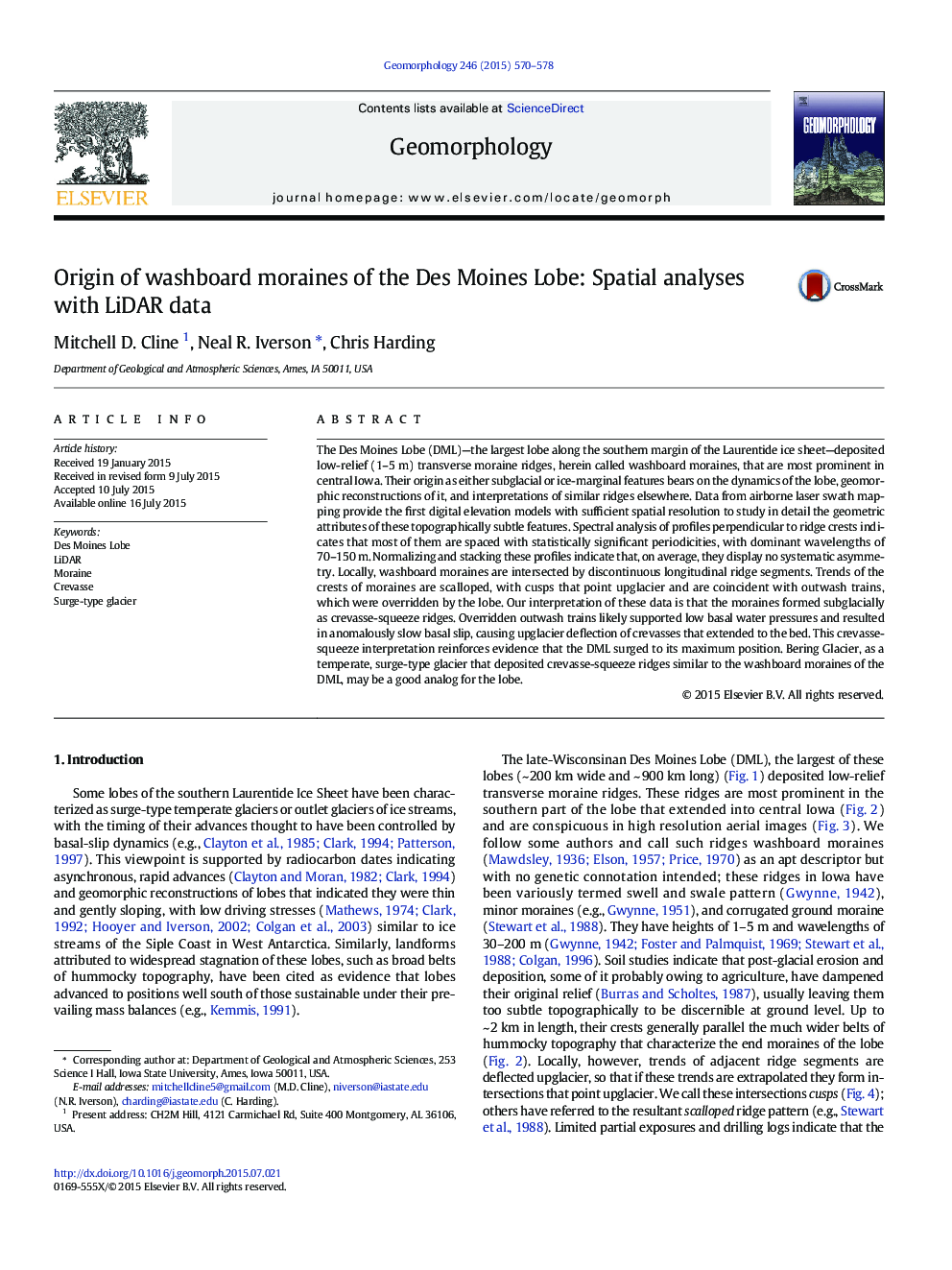| کد مقاله | کد نشریه | سال انتشار | مقاله انگلیسی | نسخه تمام متن |
|---|---|---|---|---|
| 6431997 | 1635403 | 2015 | 9 صفحه PDF | دانلود رایگان |

- LiDAR data allow analyses of low-relief, transverse moraines of the Des Moines Lobe.
- Spectral analyses indicate that ridges are spaced periodically (70-150Â m wavelengths).
- Along-flow profiles of the moraines display no systematic asymmetry.
- Moraine crests form cusps that point upglacier, coincident with outwash trains.
- The moraines likely formed as subglacial crevasse-squeeze ridges.
- This interpretation reinforces evidence that the lobe was a surge-type glacier.
The Des Moines Lobe (DML)-the largest lobe along the southern margin of the Laurentide ice sheet-deposited low-relief (1-5Â m) transverse moraine ridges, herein called washboard moraines, that are most prominent in central Iowa. Their origin as either subglacial or ice-marginal features bears on the dynamics of the lobe, geomorphic reconstructions of it, and interpretations of similar ridges elsewhere. Data from airborne laser swath mapping provide the first digital elevation models with sufficient spatial resolution to study in detail the geometric attributes of these topographically subtle features. Spectral analysis of profiles perpendicular to ridge crests indicates that most of them are spaced with statistically significant periodicities, with dominant wavelengths of 70-150Â m. Normalizing and stacking these profiles indicate that, on average, they display no systematic asymmetry. Locally, washboard moraines are intersected by discontinuous longitudinal ridge segments. Trends of the crests of moraines are scalloped, with cusps that point upglacier and are coincident with outwash trains, which were overridden by the lobe. Our interpretation of these data is that the moraines formed subglacially as crevasse-squeeze ridges. Overridden outwash trains likely supported low basal water pressures and resulted in anomalously slow basal slip, causing upglacier deflection of crevasses that extended to the bed. This crevasse-squeeze interpretation reinforces evidence that the DML surged to its maximum position. Bering Glacier, as a temperate, surge-type glacier that deposited crevasse-squeeze ridges similar to the washboard moraines of the DML, may be a good analog for the lobe.
Journal: Geomorphology - Volume 246, 1 October 2015, Pages 570-578